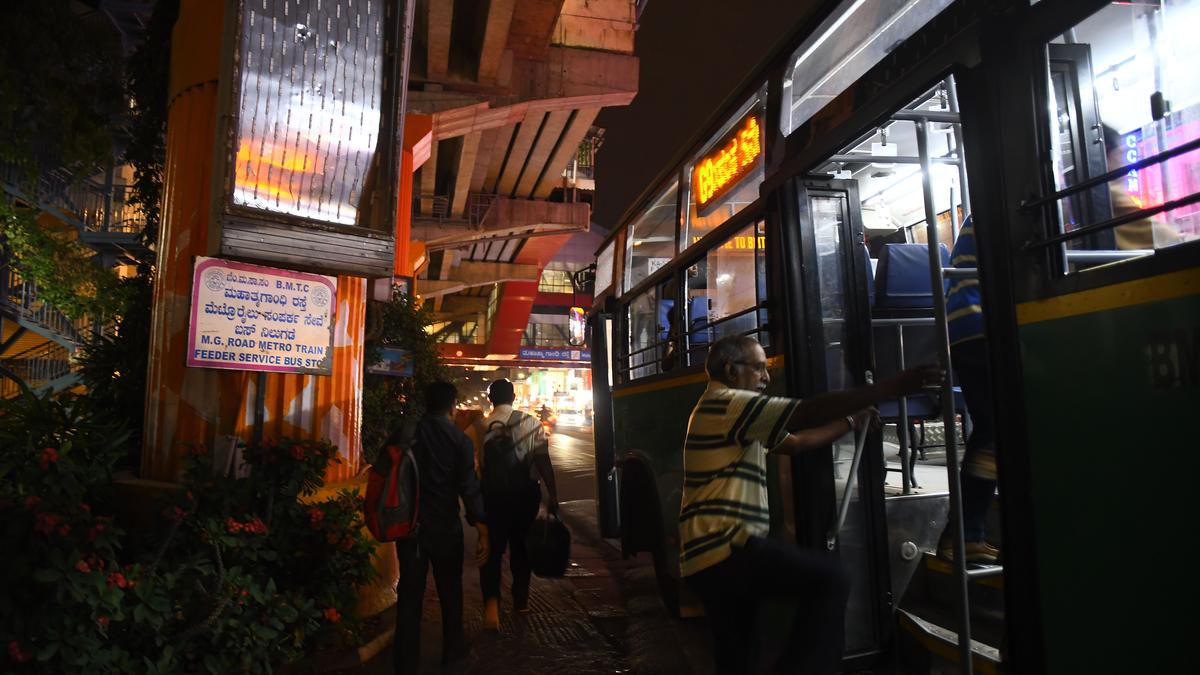
Can Bengaluru Metro’s last mile connectivity gaps be filled by players beyond BMTC? Premium
The Hindu
Last mile connectivity was always the biggest gap in Bengaluru’s Namma Metro scheme of things. As the Metro spread out far and wide in the city, this gap stood out as a perennial sore point. But the entry of BMTC Metro Feeder buses has finally begun to make an impact, while triggering another key question: Can the last mile be filled by players beyond BMTC?
Last mile connectivity was always the biggest gap in Bengaluru’s Namma Metro scheme of things. As the Metro spread out far and wide in the city, this gap stood out as a perennial sore point. But the entry of BMTC Metro Feeder buses has finally begun to make an impact, while triggering another key question: Can the last mile be filled by players beyond BMTC?
For years, commuters have had to depend on their cars or two-wheelers to fill that glaring gap between home and Metro Station, and from station to office/ workplace and back. Inevitably, this added to the city’s congestion, while exposing the lack of adequate parking spaces at most Metro stations. Feeder shuttle bus services were seen as the best bet to address this.
But are the long nine or 12-metre BMTC buses the right option for feeders?
“Bengaluru has big congestion issues with narrow roads around Metro stations. Our regular big buses will not work. We should really start thinking of deploying 15-seater, 20-seater mini buses as last mile feeders. They will also work in terms of the economics, and be competitive to other modes,” explains Pawan Mulukutla, Executive Director, Transport and Clean Air Programme at the World Resources Institute (WRI) India.
There has to be a method in the feeder system, its design and frequency. Pawan suggests setting up a Last Mile Cell at the Bangalore Metro Rail Corporation Limited (BMRCL) with access to all the commuter data. Feeder bus frequency could be based on the number of people getting in and off the stations during peak and off-peak hours.
BMRCL and BMTC should align the frequency of buses, understand the patterns of where people are living around metro stations, and connect those. As Pawan points out, “This should be the way rather than saying let’s deploy buses every 30 minutes and that’s our frequency. The benefit of the Metro is lost if the last mile is not immediately available.”
Talking of options, experts say it need not be all about BMTC buses. Says independent mobility analyst and consultant Sathya Arikutharam, “The city should now consider what Delhi has done, by giving licence to Uber Shuttle buses. They can aggregate mini buses, by repurposing so many modes. For example, company shuttle buses are mostly idle in the afternoons. They can be repurposed for smart travel so that people don’t need to think of two-wheelers or cars at all for going out.”











